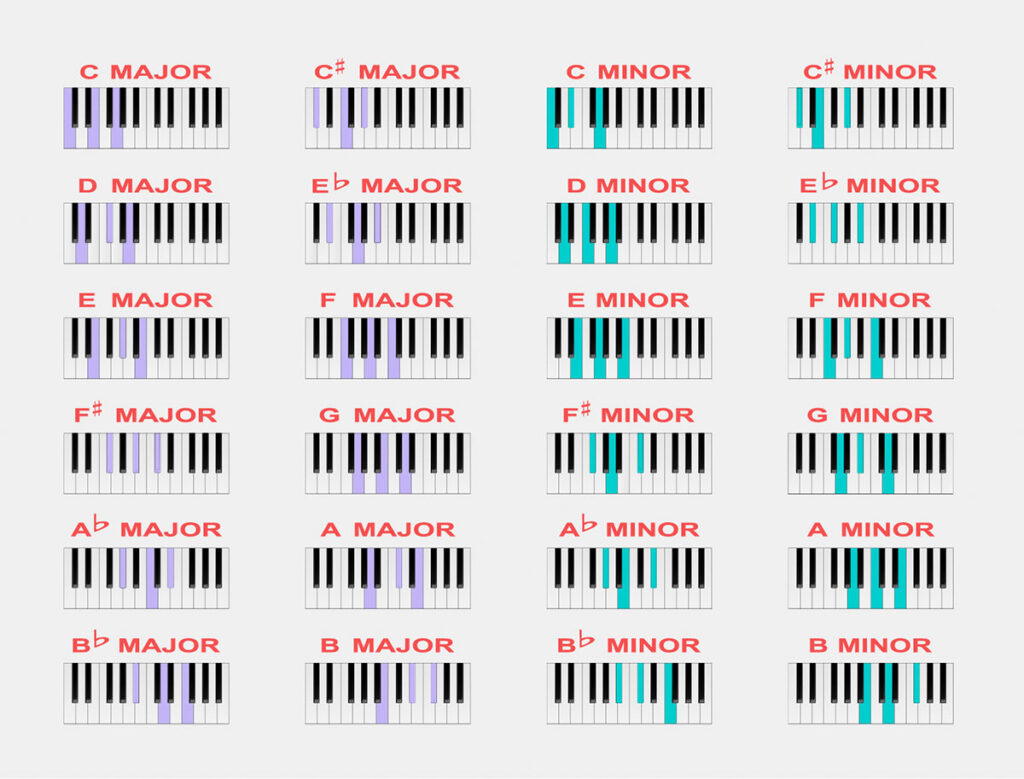Do you need to know music theory?
Knowledge of music theory is not essential to making music - there are numerous examples of people like David Bowie or Eric Clapton who never studied music theory.
But one has to admit that such knowledge is a great advantage when composing or playing with other musicians in a band. They speed up the composition process enormously and allow us to communicate with other musicians in the same "language".
It's much easier to tell a guitarist, "Play a G minor, please" than to say, "Play the chord on the third fret of the sixth string, but not the happy one, the sad one!"
One of the most important concepts is chords, the basic building blocks of any song. There are many different types of chords that have different moods and characters. When these are cleverly combined, the harmony of the song is formed.
Keep reading: Tritone - Why the devil's interval is so special
What are chords in music?
A chord is a group of at least three different notes that are played together and harmonize. They are formed by fixed intervals from the fundamental.
The notes of a chord can be played simultaneously (triad) or one after the other (arpeggio), producing a full, harmonious sound.

The combination of notes in a chord gives it its unique character and distinguishes it from other chords. They are an essential element of any style of music: they form the basis of most songs and are used to create rhythm, harmony, and melody.
Chords are played on a variety of instruments, such as guitars, pianos, and organs - in fact, any instrument that can play several notes at once (polyphony) - and can be used to create a variety of moods, from happy and upbeat to sad and reflective.
What are intervals?
➔ Read the detailed article about intervals here
In music, an interval is the distance between two notes. It is the measure of the difference in pitch between two notes and is expressed in either half-tone (also called semitones) or whole-tone (also called tones) steps.
Chords are always created by combining different intervals.
For example, the distance between two consecutive keys (white or black) on a piano is one semitone. The distance between two consecutive white keys is two semitones (except between E and F and between B and C).
Intervals play an important role in music theory and composition, defining the relationships between different tones and helping to create melodies, harmonies and chord progressions.
You can read more about intervals, steps and harmonies in my article about musical cadences.
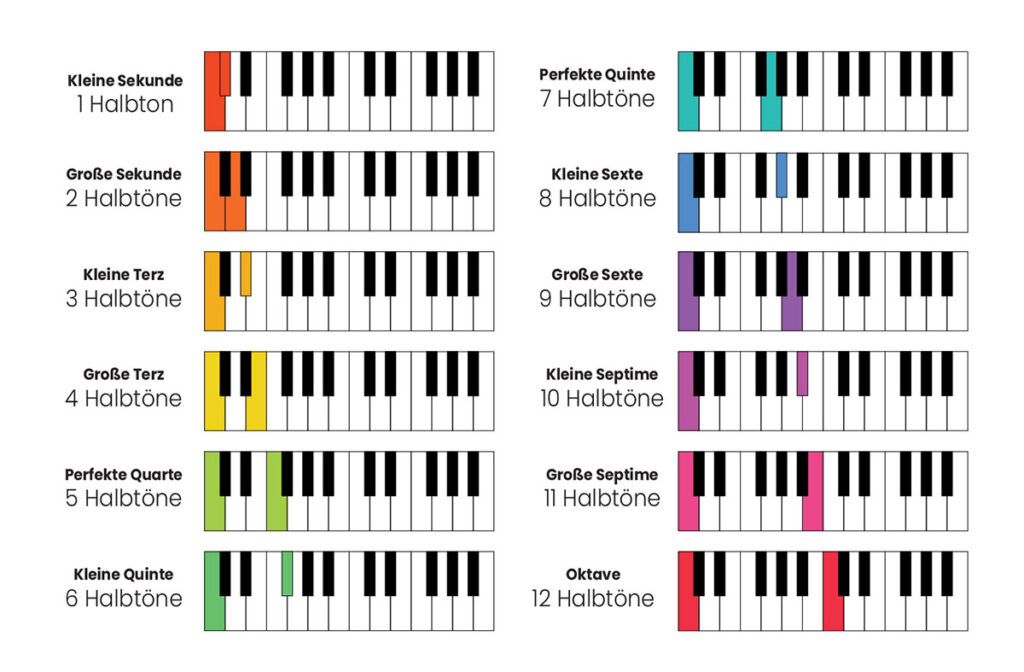
There are a total of 13 different types of intervals:
- Unison: the distance between two notes of the same pitch, i.e. 0
- Minor second: the distance between two consecutive keys on a piano
- Major second: two semitones
- Minor third: three semitones
- Major third: four semitones
- Perfect fourth: five semitones
- Tritone: six semitones
- Perfect fifth: seven semitones
- Minor sixth/Augmented fifth: eight semitones
- Major sixth: nine semitones
- Minor seventh: ten semitones
- Major seventh: eleven semitones
- Octave: twelve semitones
Each type of interval has its own sound and is used in different musical contexts to achieve different effects. Intervals are important in composing music and are studied in musical theory.
For example, a minor second sounds dissonant and can be used to create tension or fear. A perfect example is the music in the movie Jaws, where minor seconds are constantly played to make the music scary.

By loading the video, you accept YouTube's privacy policy.
Learn more
The music of "Happy Birthday", on the other hand, uses major seconds and fourths, which sound much more cheerful and relaxed. You can see how much the intervals affect the mood of the song.

By loading the video, you accept YouTube's privacy policy.
Learn more
Triad
A triad is a type of chord consisting of three notes. They are played simultaneously and are separated from each other by well-defined intervals.
Triads play an important role in creating harmony and determining the key of a piece of music. They can also be played in various inversions, where the order of the notes can be reversed to create different harmonic possibilities.
Important: The sound of a chord can be influenced by the context in which it is used. For example, a minor chord may sound sad in one song, but exciting or mysterious in another context. The same is true for major chords.
Ultimately, the emotional impact of a chord depends on the combination of intervals, rhythm, melody, and harmony used in a piece of music.
Major chords
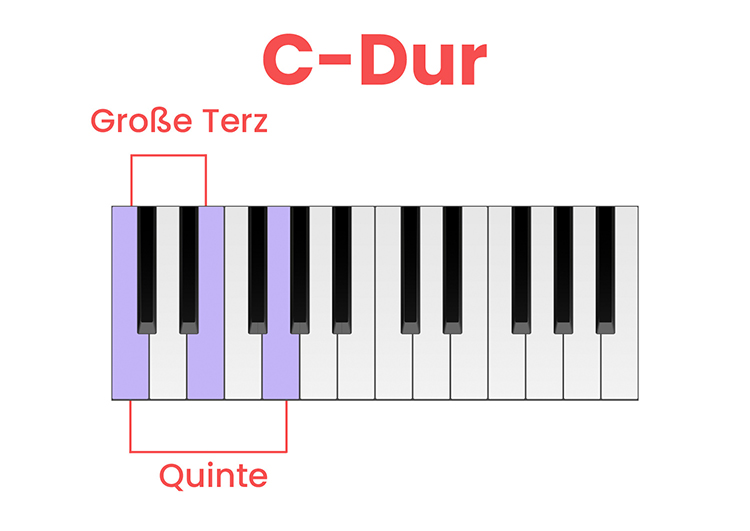
The most common triad is the major triad, which consists of a root note, a major third, and a fifth.
The sound of a major chord is generally described as bright, cheerful, and triumphant. It conveys a sense of stability and resolve. Major chords are often used in happy and optimistic music and can evoke feelings of happiness and excitement.
Minor chords
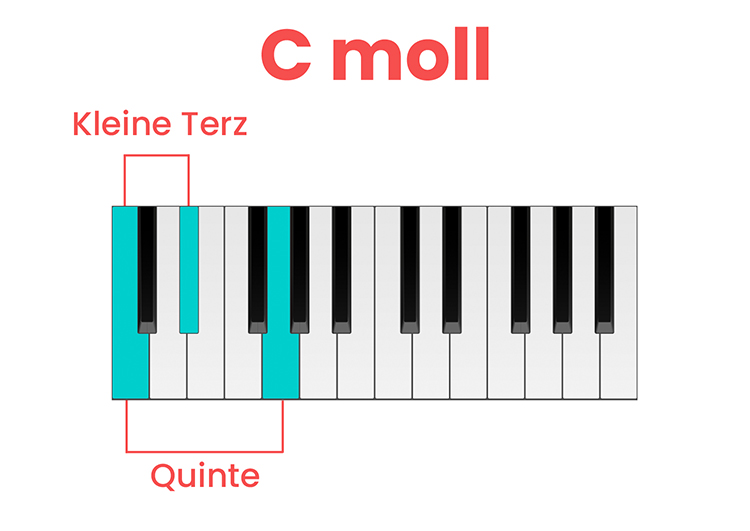
A minor chord, on the other hand, is formed from a root note, a minor third, and a fifth.
This combination of intervals produces a sad, tense and unresolved sound. Therefore, minor chords are often used in music that expresses sadness, self-reflection or a more contemplative mood.
Diminished chords
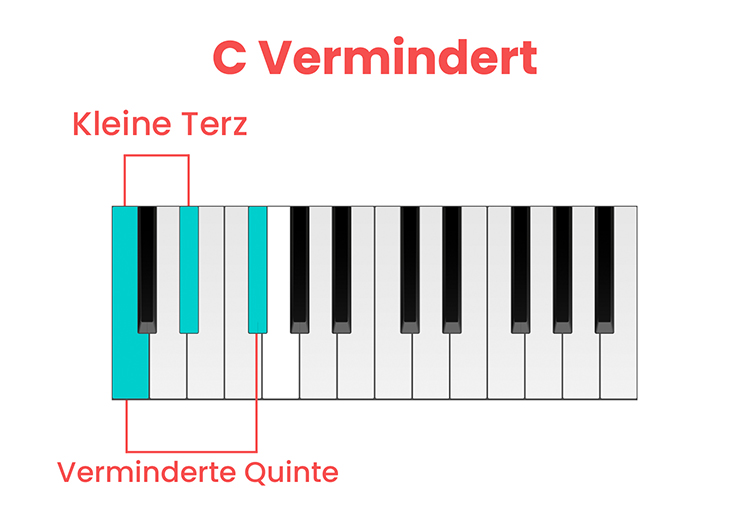
A diminished chord consists of a root note, a minor third, and a diminished fifth.
The sound of a diminished triad is tense, unstable and dissonant. This combination of intervals creates tension and the need for resolution. This is why diminished chords are often used in music to create dramatic moments and build tension.
Augmented chords
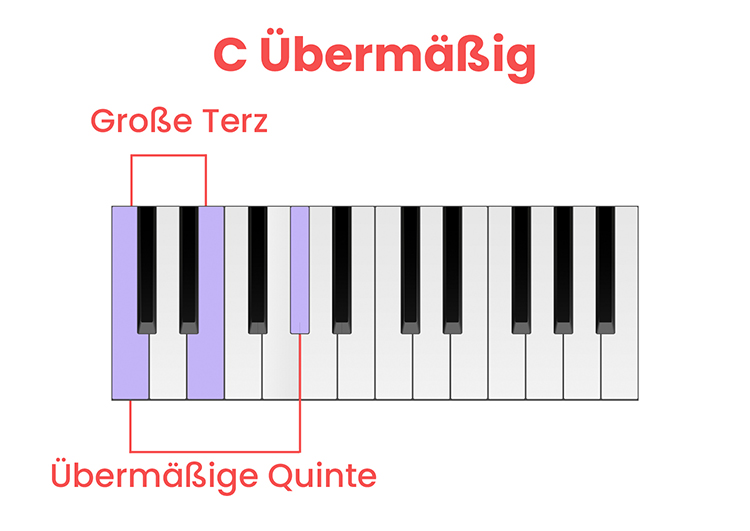
An augmented triad consists of a root note, a major third, and an augmented fifth.
The sound of an augmented triad is characterized by its brightness, harmonic complexity, and surprise effect. It can add a unique or dramatic element to a piece of music.
Seventh Chords
A seventh chord is a chord made up of four different tones. It consists of one of the above triads + another note.
The most common four-note chords in Western music are seventh chords, which consist of a root, a third, a fifth, and a seventh. These chords can be major, minor, augmented or diminished, and each type of seventh chord has its own sound and feel.
These are the 4 most frequently used seventh chords:
- Major seventh chord: major chord + major seventh
- Minor major seventh chord: minor chord + major seventh
- Dominant seventh chord: major chord + minor seventh
- Minor seventh chord: minor chord + minor seventh
They are a very important part of jazz music, and their sound and feel can have a significant impact on the overall mood of a piece of music. Seventh chords sound more complex and harmonically rich than simple major or minor chords - but they are also much more difficult to play!
Power Chords for Rock'n'Roll
Power chords are a type of chord often used in rock, punk, or metal music. They consist only of the root and the fifth - so the third is left out. This creates a chord that is neither major nor minor, but sounds neutral and ambiguous.
Power chords are often played on electric guitars with distortion and high volume to create a powerful and aggressive sound. They are used in conjunction with hand muted or open string rhythms and are used to create a driving, energetic sound.
Because power chords consist of only the root note and a fifth, they are easy to play and can be easily strummed up and down the guitar neck. This makes them especially popular among beginners who want to create a powerful and aggressive sound in their music.
Combining chords when composing
You have now learned the most important chords - now it's time to combine them to compose songs.
I have already mentioned that the sound, or rather the effect, of chords varies depending on the context. But why, exactly? C major is just clearly C major, isn't it?
Well, that's only half the truth. We need to look at the key of the song to understand the "musical context", because each key has different scale degrees. These degrees represent the position of the note in relation to the whole scale.

Each degree has its own name and is represented by Roman numerals:
- I: Tonic
- II: Supertonic
- III: Mediant
- IV: Subdominant
- V: Dominant
- VI: Submediant
- VII: Leading tone
- VIII: Tonic (like I)
The most important stages are the tonic (I), the dominant (V) and the subdominant (IV).
So C major is the tonic when we are in the key of C major. But if we are in the key of G major, then C major is the subdominant and G major is the tonic. So C major as a subdominant has a completely different effect on the listener than it does as a tonic.
As an example: In the C major scale, the C major chord is the tonic, F major is the subdominant (4th degree), and G major is the dominant (5th degree). In the G major scale, G major is the tonic, C major is the subdominant (IV) and D major is the dominant (V).
The combination of these 3 degrees, i.e. the chord progression I, IV, V, always sounds good and has been used in thousands of songs.
Keep reading:





